- Category
- War in Ukraine
How Ukraine’s Defense at Hostomel Airport Crushed Russia’s Blitzkrieg Plan
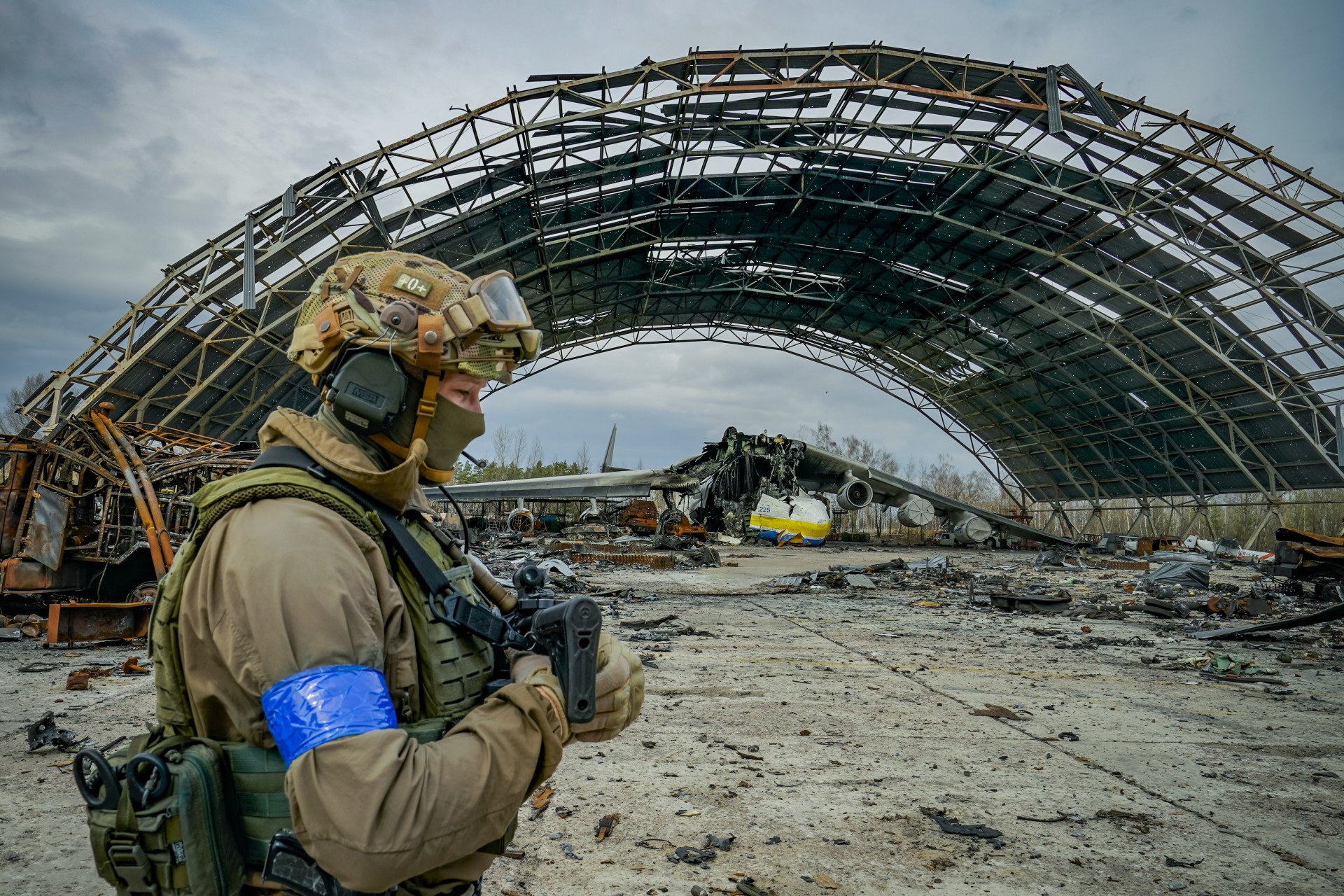
In the early hours of February 24, 2022, Russia launched a full-scale invasion of Ukraine, aiming to seize Hostomel Airport as a key staging ground for a rapid assault on Kyiv. However, fierce Ukrainian resistance turned the planned blitzkrieg into a major failure, marking a turning point in the war.
When Russia invaded Ukraine, its primary objective was not just territorial expansion—it was the outright elimination of Ukraine’s independent government. Russian leader Vladimir Putin even claimed that the bloodshed caused by Russia’s invasion is “fully and wholly” the responsibility of “the ruling Ukrainian regime” in his address on February 24, 2022.
As Ukraine’s political and military heart, Kyiv was the ultimate target. Historically, the fall of a nation’s capital has often signaled the collapse of its government and the end of organized defense. Russia’s plan closely mirrored the Blitzkrieg tactics of Nazi Germany in 1940, when swift mechanized assaults and airborne operations overwhelmed France in just weeks.
The Kremlin sought to replicate this rapid strike: overthrow Kyiv’s leadership, install a pro-Russian administration, and force Ukraine into submission before any resistance could take shape.
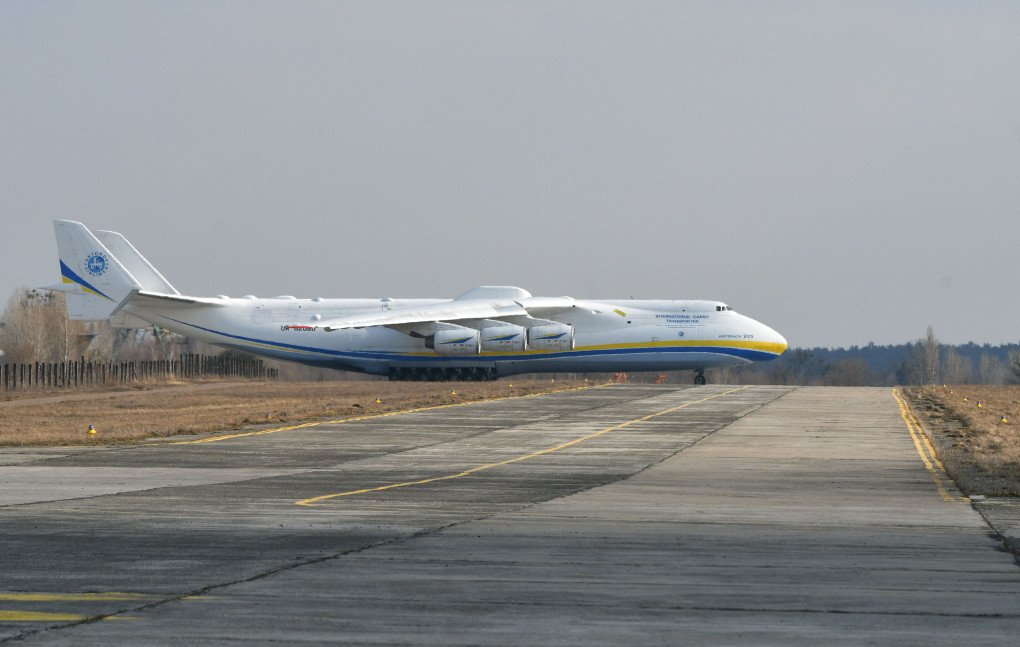
This made Hostomel Airport the single most critical target in the opening hours of the war. Located just 25 kilometers from Kyiv, it was one of the few airfields in Ukraine capable of handling large military transport aircraft. By securing it, Moscow planned to flood the area with paratroopers, armored vehicles, and reinforcements flown in from Russia and Belarus.
This airborne invasion would have bypassed Ukraine’s ground defenses, allowing Russian forces to launch a direct assault on the capital—potentially ending the war in days, rather than months or years.
But Ukrainian forces disrupted Russia’s plans and prevented a swift takeover. How did they do it?
Intelligence and diplomacy
In mid-January 2022, CIA Director William Burns made a clandestine visit to Kyiv to personally brief Ukrainian President Volodymyr Zelenskyy on U.S. intelligence assessments of Russia’s imminent invasion. The briefing revealed that Moscow’s military strategy hinged on a rapid assault on Kyiv, with Hostomel Airport as a critical target.
Russian forces planned to seize the airport within hours of launching the invasion and establish an air bridge for thousands of paratroopers and armored vehicles, allowing them to bypass Ukraine’s ground defenses, according to U.S. intelligence. The ultimate goal was a swift “decapitation strike”—toppling the Ukrainian government.
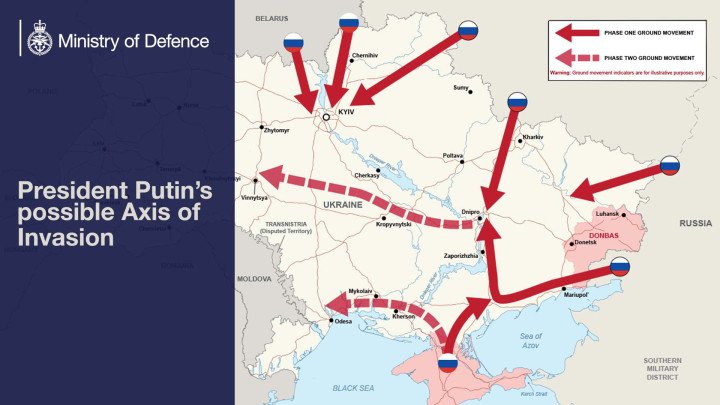
Ukraine’s military leadership took the warning seriously, reinforcing Hostomel’s defenses and preparing for a potential airborne assault. However, the scale and intensity of the coming battle would exceed even the worst expectations.
On February 18, 2022, just six days before the invasion, U.S. President Joe Biden issued one of his most explicit warnings about the impending attack.
We have reason to believe that Russian forces are planning and intend to attack Ukraine in the coming week—in the coming days. We believe that they will target Ukraine’s capital, Kyiv, a city of 2.8 million innocent people.
Joe Biden
President of the United States
Despite these warnings, Moscow dismissed concerns as Western hysteria, while Kyiv prepared defenses without triggering public panic.
The last day before full-scale war
February 23, 2022, began like any other day. But as diplomatic efforts stalled, Russia’s military buildup reached its peak: over 150,000 troops, heavy artillery, and logistical support stood poised to strike. The day would be remembered as the final hours before Europe’s largest war since World War II.
Despite mounting evidence that an invasion was imminent, many still clung to the hope that diplomacy might prevail. Throughout the day, the tension mounted:
Morning & Afternoon: Western intelligence monitored new Russian troop movements, detecting final combat deployments and additional air and missile units preparing for the attack.
Evening: In eastern Ukraine, Russian-backed militants intensified shelling, targeting Ukrainian positions and civilian areas in Donbas. Simultaneously, massive cyberattacks disrupted Ukrainian government systems and military communications.
11:00 PM: The final aircraft—a massive Antonov An-124 “Ruslan”—departed Hostomel Airport.
Night: In Hostomel, Ukrainian National Guard troops remained unaware of the catastrophe ahead. That night, some gathered around a small fire, grilling sausages near the airfield—their last moment of peace before war engulfed them.
Meanwhile, intelligence agencies in Washington, Brussels, and London issued their final warnings, confirming that the full-scale invasion was inevitable.
The first strikes
At dawn on February 24, 2022, Europe awoke to the most extensive military offensive on the continent since World War II. After months of speculation, Putin announced a "special military operation " in Ukraine, launching a full-scale invasion aimed at crushing Ukrainian resistance and seizing control of the country. Within minutes, missiles rained down on Ukrainian cities, and Russian forces began their advance from multiple directions.
At precisely 5:00 AM EET, the first Russian missile strikes hit Ukrainian territory. Explosions rocked key military installations, including airfields, command centers, and ammunition depots. The Kremlin’s objective was clear: disable Ukraine’s ability to mount a coordinated defense before ground troops advanced.
Hostomel, home to the Antonov Airport, was one of the earliest targets. A Russian missile struck a National Guard base near the airfield, marking the first direct hit in the battle for Kyiv. Elsewhere, similar strikes targeted airfields in Boryspil, Mykolaiv, and Ivano-Frankivsk, signaling that Russia sought air superiority from the outset.
In an emergency video address at 6:00 AM, Ukrainian President Volodymyr Zelenskyy confirmed the attack:
Russia has struck our military facilities and our border guards, our border units. Explosions were heard in many cities of Ukraine. We are introducing martial law across the entire territory of our state.
Volodymyr Zelenskyy
President of Ukraine
This would be the last time Zelenskyy addressed the nation wearing a suit and tie. By the end of the day, he would adopt the military-style clothing that would come to symbolize his leadership throughout the war—a style he has maintained to this day.
With these words, Ukraine formally entered a state of war.
Orders to resist
As the scale of the attack became clear, Ukraine’s military leadership moved swiftly to coordinate the national defense. Zelenskyy issued an urgent call to arms, announcing that weapons would be distributed to all willing defenders. This marked the first official mobilization of Ukraine’s civilian population into the war effort.
Simultaneously, General Valerii Zaluzhnyi, the Commander-in-Chief of the Ukrainian Armed Forces at the time, directed all military units to hold their positions and inflict the maximum possible damage on advancing Russian forces. Ukrainian troops across the country scrambled into defensive positions, bracing for the full force of Russia’s offensive.
In Kyiv, territorial defense units received orders to secure key infrastructure, government buildings, and critical access points to prevent Russian sabotage operations. Meanwhile, Ukraine’s air defenses engaged incoming Russian missiles, attempting to limit the damage from the initial bombardment.
Across Ukraine, railway stations filled with civilians attempting to flee, while others lined up at military recruitment centers. The mood in the capital shifted from shock to defiance as Ukrainian forces prepared for an all-out fight.
In Hostomel, Ukrainian defenders were about to face one of the most critical battles of the war’s opening day—one that would determine whether Russia’s rapid invasion plan would succeed or collapse before it could reach Kyiv.
The battle for Hostomel Airport
What was supposed to be a swift and decisive airborne operation quickly turned into a chaotic and costly fight for control.
11:00 AM—First contact. Russian helicopters in the air
A wave of 34–40 Russian helicopters, including Ka-52 “Alligator” gunships and Mi-8 transport helicopters, flew toward Hostomel from Belarus. Ukrainian forces, armed with man-portable air defense systems (MANPADS), were ready.
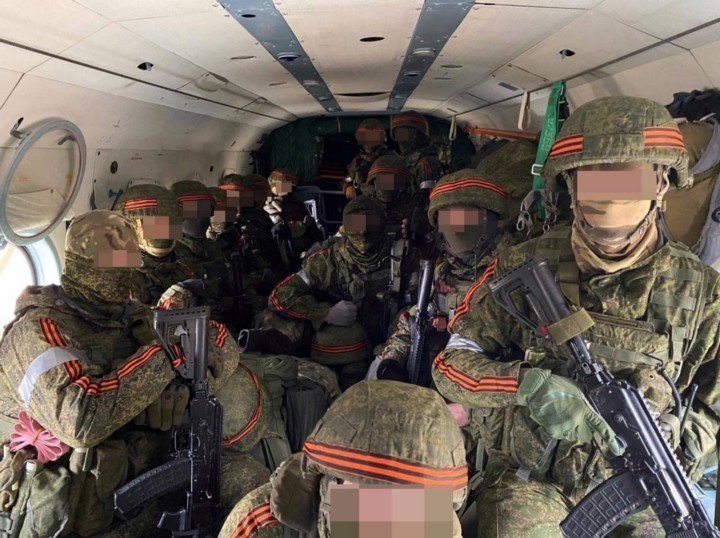
A Ukrainian National Guardsman fired a missile, hitting a Ka-52, marking the first confirmed aerial loss of the invasion. Russian helicopters returned fire with rockets and autocannons, intensifying the assault.
12:00 PM — Russian paratroopers land under fire
Despite the resistance, Russian Mi-8 transport helicopters continued their descent onto the airport’s runways. Under the cover of attack helicopters, waves of Russian airborne troops (VDV) began landing, aiming to establish control over the airport and prepare it for the arrival of reinforcements.
As the battle raged, another Ka-52 was shot down, and at least one Mi-8 was damaged while attempting to land under heavy Ukrainian fire.
2:00 PM — Ukrainian counterattack. Chaos in Russian ranks
While Russian troops sought to consolidate their position at the airport, Ukrainian forces launched a counteroffensive. Elite units from the Special Operations Forces (SSO), Military Intelligence (HUR), and the 4th National Guard Brigade struck back at the airborne troops, targeting their positions and disrupting their advance.
With Ukrainian resistance intensifying, Russian helicopters began maneuvering erratically over Hostomel, struggling to maintain coordination with ground forces. The lack of centralized control turned the situation into chaos.
5:00-6:00 PM — Artillery strikes from the 72nd Mechanized Brigade
Heavy artillery from the 72nd Mechanized Brigade was directed to bombard the airport, aiming to render its runways completely inoperable. This move would prevent Russia from using Hostomel as a staging ground for further airborne operations.
Investigative journalist Christo Grozev (Bellingcat) later reported that 18 Il-76 transport planes, carrying Russian reinforcements, had taken off from Pskov but were forced to turn back once it became clear that Hostomel was no longer a viable landing site.
By nightfall, Russia had failed to secure Hostomel as an operational airbridge for its assault on Kyiv. The collapse of this plan forced Russian forces into a prolonged and costly ground offensive.
The resistance at Hostomel gave Ukraine crucial time to reinforce its positions around the capital, altering the course of the war in its opening hours.
Russia’s short-lived victory (February 25 – March 30, 2022)
Despite heavy losses and fierce Ukrainian resistance, Russian forces eventually managed to seize control of Hostomel Airport by the evening of February 25. However, their apparent victory quickly turned into a logistical nightmare. What was supposed to be a critical staging ground for an assault on Kyiv became a vulnerable and heavily contested position, constantly targeted by Ukrainian forces.
The Kremlin claimed that its elite paratroopers had held their positions throughout the night and that the airport was now operational. In reality, the situation was far from stable.
As the Russian offensive toward Kyiv stalled, Hostomel Airport became a key logistical hub for Moscow’s operations in the region. Russian forces turned the airfield into a forward operating base, using it to store vehicles, supplies, and ammunition. However, this static position made them an easy target for Ukrainian strikes.
Throughout March, Ukrainian artillery and drone strikes continuously targeted Russian positions at Hostomel. Battlefield footage revealed burned-out convoys and destroyed armored vehicles, while satellite images confirmed heavy losses.
Russia’s chaotic retreat and the liberation of Kyiv (March 31 – April 2, 2022)
As Ukrainian counteroffensives intensified, Russian forces abandoned Hostomel. By March 31, Russia’s plan to seize Kyiv had collapsed. Hostomel, once a strategic foothold, was left in ruins.
As Russian units hastily retreated, they left behind a landscape of devastation—burned-out armored vehicles, destroyed supply convoys, and shattered buildings.
Among the ruins lay one of the most symbolic losses of the war: the wreckage of the Antonov An-225 “Mriya,” the world’s largest cargo plane, destroyed during the battle for the airport.
Hostomel as a symbol of resistance
The defenders of Hostomel showed the world that determination and strategy could overcome brute force, laying the foundation for the broader Ukrainian resistance. They became legendary figures in Ukraine’s modern history. Against overwhelming odds, they disrupted Russia’s most ambitious operation and bought Ukraine the time it needed to organize its defense.
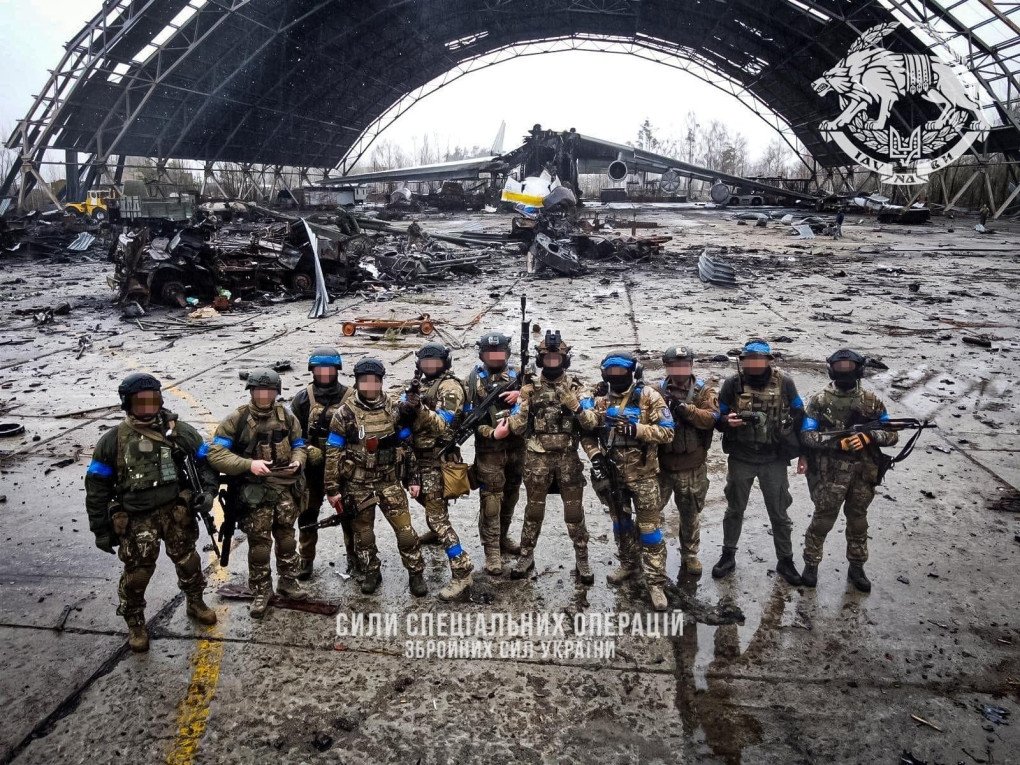
Ukrainian President Volodymyr Zelenskyy, reflecting on the battle, later told Italian journalist Cecilia Sala in an interview for Il Foglio on January 28, 2025.
If Kyiv had fallen in February 2022, we would have lost the war.
Volodymyr Zelenskyy
President of Ukraine
The battle of Hostomel Airport demonstrated that Russia’s military superiority was not absolute, and its failure to break Ukraine in the first days of the full-scale invasion set the stage for prolonged resistance and eventual counteroffensives.

-c42261175cd1ec4a358bec039722d44f.jpg)
-46f6afa2f66d31ff3df8ea1a8f5524ec.jpg)
-6359eca46c72bde40a90abaaadd6eaa8.png)
-29a1a43aba23f9bb779a1ac8b98d2121.jpeg)

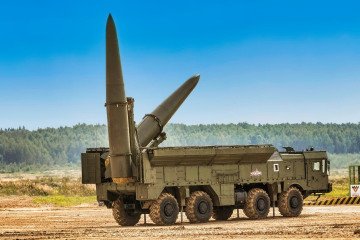
-206008aed5f329e86c52788e3e423f23.jpg)